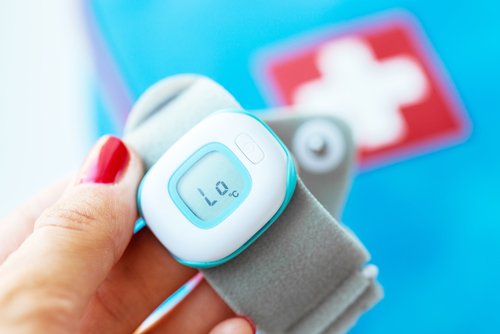NIH Grant Supports Development of HDWear System to Monitor Motor Function Remotely

The National Institute of Neurological Disorders and Stroke (NINDS) of the National Institutes of Health (NIH) has awarded a grant of more than $2.5 million to support the development of HDWear, a telecare technology that uses wearable sensors to remotely monitor motor function in Huntington’s disease (HD) patients.
The two-year project will be undertaken by BioSensics, a company focused on the development of wearable technologies for healthcare challenges, in collaboration with researchers at the University of Rochester Medical Center.
“HD patients often have to travel long distances to be seen by knowledgeable HD clinicians. Travel is often very difficult both physically and financially for HD patients and their caregivers,” George Yohrling, PhD, said in a press release. Yohrling is senior director of mission and scientific affairs of the Huntington’s Disease Society of America.
“The development and eventual integration of wearable biosensors into a HD clinic would allow for remote monitoring of a patient’s motor symptoms and could alleviate this unnecessary burden on the entire HD family,” Yohrling said.
This project was based on preliminary data from a pilot study conducted in collaboration with the University of Rochester Medical Center and Teva Pharmaceuticals.
In the report “Wearable Sensors in Huntington Disease: A Pilot Study,” which was published in the Journal of Huntington’s Disease, researchers showed it was feasible to use wearable sensors, both in the clinic and at home, that could remotely monitor motor function and recognize HD-associated motor impairment.
“We are excited to be working with BioSensics on evaluating wearable sensors to obtain objective, high frequency, and potentially sensitive assessments of individuals with Huntington’s disease both inside and outside the clinic,” said Ray Dorsey, MD, the David M. Levy Professor in Neurology and director of the Center for Health and Technology (CHeT) at University of Rochester Medical Center.
HDWear will take advantage of BioSensics’ proprietary PAMSys technology that provides continuous remote monitoring of motor function. This technology allows the remote assessment of several physical activity parameters, including walking characterization, fall detection, and postural transitions.
HDWear also is expected to become a potential way to assess the effectiveness of therapies. During the project, the research team will perform a clinical study to test HDWear’s ability to detect subtle motor alterations in patients in early stages of HD and in response to anti-chorea medication.
“We are grateful for the support provided by NIH for our research and development. We look forward to creating a comprehensive telecare solution for Huntington’s disease to facilitate clinical research and new drug development, and ultimately to improve and revolutionize HD care and care coordination,” said Joseph Gwin, PhD, vice president of research and development at BioSensics.






